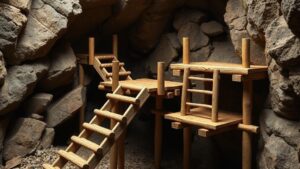The Discovery of Rich Silver Deposits in Idaho’s Silver Valley
The Discovery of Rich Silver Deposits in Idaho’s Silver Valley
Idahos Silver Valley has a storied history as one of the most significant mining districts in the United States. The regions rich silver deposits have not only driven local economies but have also influenced national trends in mining and silver usage. This article explores the discovery of these deposits, their historical context, impacts, and ongoing relevance in todays economy.
Historical Background
The Silver Valley is located in northern Idaho, particularly within Shoshone County. areas mining history can be traced back to the mid-19th century, when prospectors first began to explore the region. But, it was not until the 1880s that significant deposits of silver were uncovered, triggering a mining rush that would define the areas economy for decades.
In 1884, the discovery of silver-rich ore near the town of Wallace led to substantial investment in mining operations. By 1890, the area was producing nearly 1.5 million ounces of silver annually, fueled by the establishment of several key mines, including the Bunker Hill and Sullivan mines. Bunker Hill Mine alone produced over 4.5 million ounces of silver from 1885 to 1991, exemplifying the districts enormous potential.
Geological Factors
The geological features of the Silver Valley play a crucial role in the prevalence of silver deposits. The region is characterized by a complex geological history involving volcanic activity and sedimentary processes. The main ore body consists of a series of silver-lead-zinc deposits, particularly in the Coeur dAlene mineral belt, which extends into Idaho. e deposits are primarily found in sedimentary rocks that have undergone metamorphism, creating ideal conditions for the formation of silver ores.
- Silver generally occurs in combination with lead (galena) and zinc (sphalerite).
- The presence of hydrothermal fluids during volcanic activity contributed to the rich mineralization.
Economic Impact
The mining boom of the Silver Valley transformed Idahos economy. Miners flocked to the area in search of fortune, leading to a rapid population increase and the establishment of infrastructure, including railroads and smelters. According to the Idaho Department of Labor, by the early 1900s, 80% of the states taxable income came from mining operations.
Also, the silver extracted from the Silver Valley contributed significantly to the United States position in the global market. Between 1900 and 1920, the U.S. was one of the largest producers of silver, and this was largely due to the Silver Valleys output. The value of silver produced contributed to financing World War I, further embedding the region’s significance into national history.
Environmental and Social Considerations
While the economic benefits of silver mining were considerable, they came at a significant environmental cost. Mining activities have historically led to soil and water contamination, primarily due to the disposal of tailings. Community health issues, such as respiratory illnesses among miners and their families, were also recorded due to exposure to lead and other harmful elements.
In recent years, there has been a concerted effort to mitigate these impacts. Environmental remediation projects are now common, focusing on restoring contaminated sites and improving local ecosystems. For example, the Coeur dAlene River Basin Superfund site is an example of a large-scale cleanup effort aimed at addressing historical pollution from mining practices.
Current Status and Future Prospects
Today, silver mining in Idaho’s Silver Valley is far less prolific than it was in the past. But, the area is still of interest to mining companies and investors, especially as demand for silver continues to rise due to its use in technology and renewable energy solutions. Advances in mining technology and environmentally-friendly practices offer potential for sustainable operations moving forward.
Conclusion
The discovery of rich silver deposits in Idahos Silver Valley was a pivotal moment in both state and national history, shaping economies and communities. As we move forward, balancing the economic benefits of mining with environmental stewardship remains crucial. Those interested in the future of silver mining must consider not only the geological aspects but also the social and environmental impacts of their activities. The Silver Valley will continue to be a significant area for both historical and contemporary mining narratives.
Actionable Takeaway: For those looking to invest or engage in mining in the Silver Valley, understanding its rich history while also prioritizing sustainable practices will be key to success. This dual focus may not only help protect the environment but also foster a positive relationship with the community that has long been shaped by its mining legacy.


